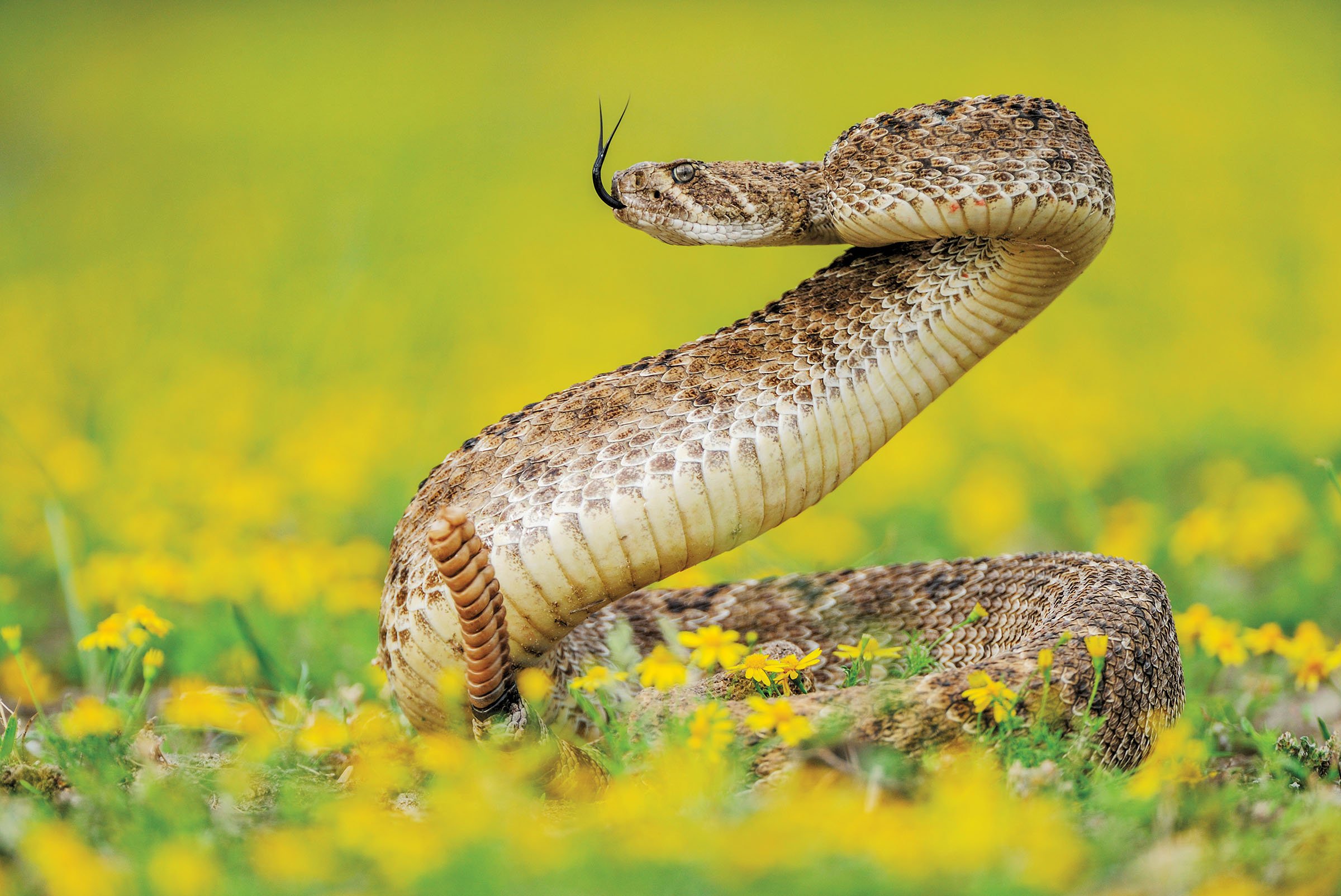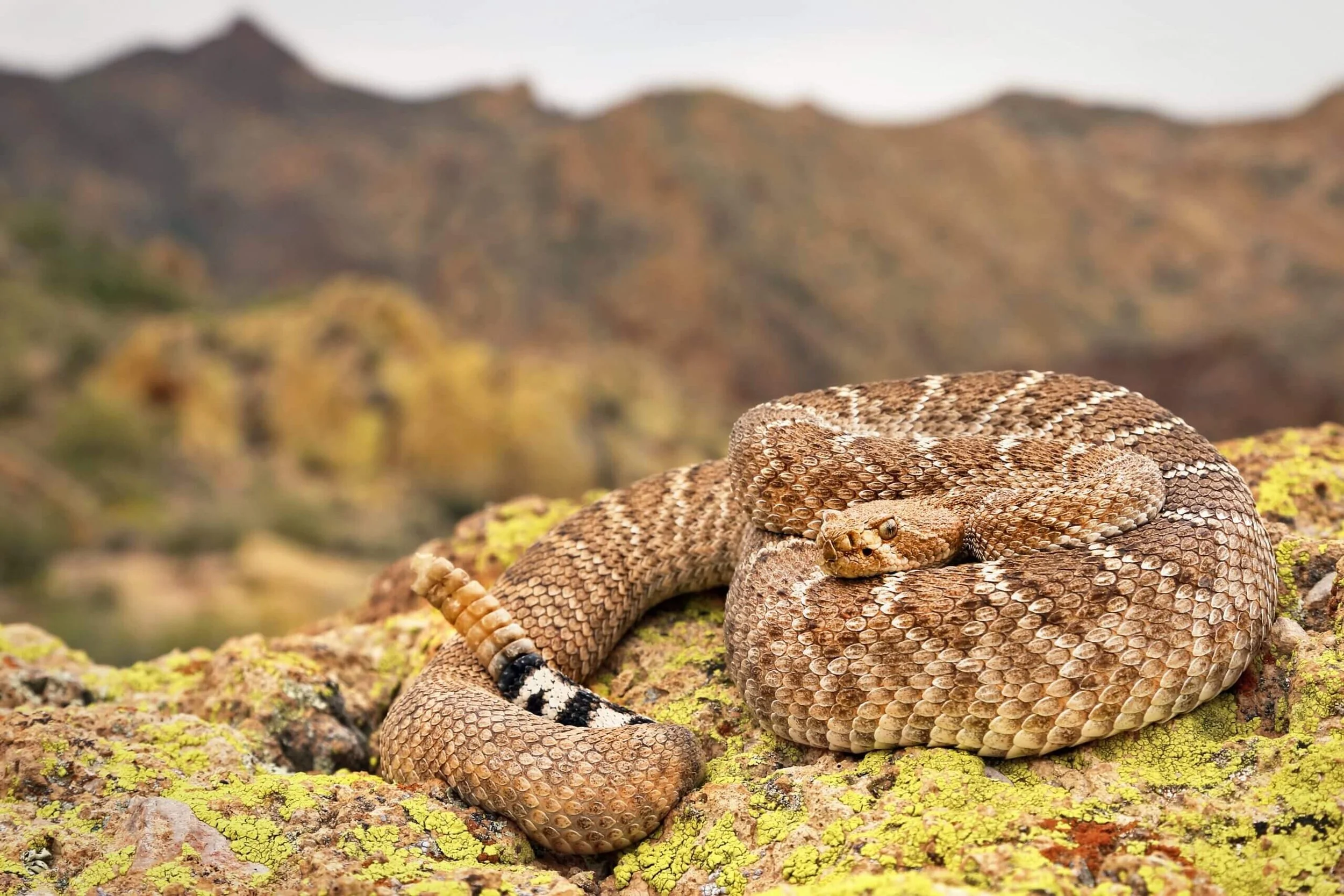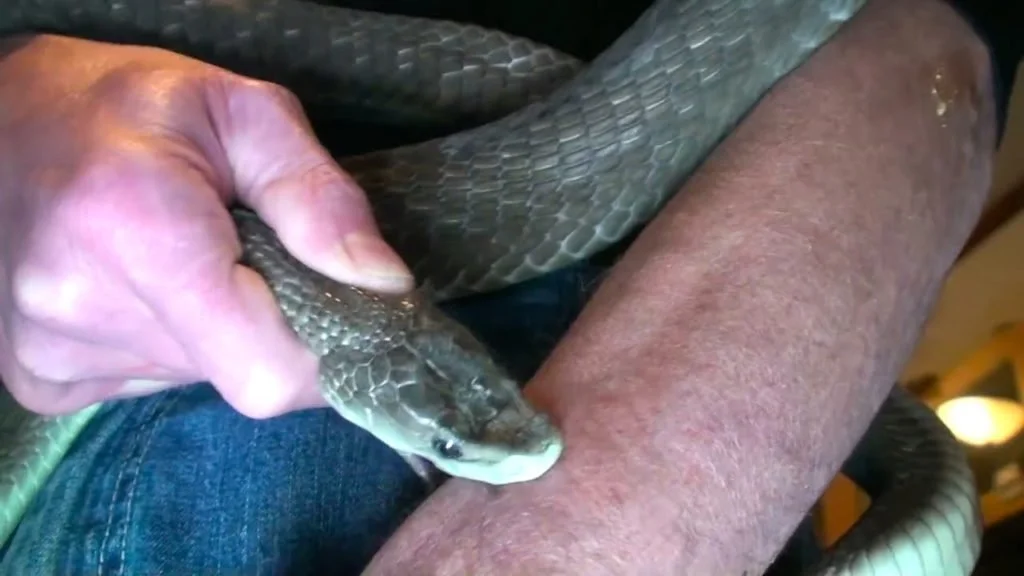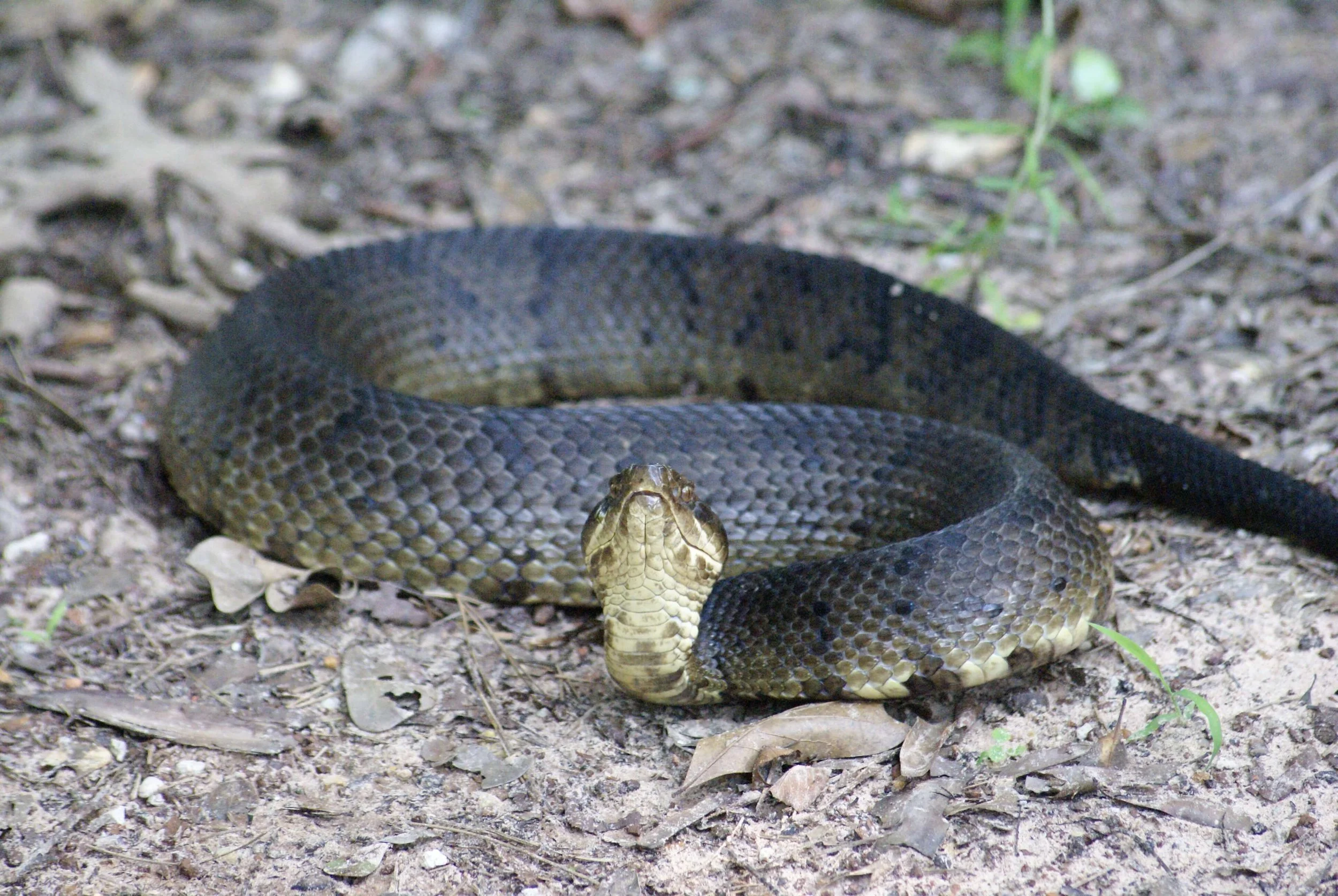Wild Snakes of Texas: A Comprehensive Guide
Discover > Truly Texan > Wild Snakes of Texas: A Comprehensive Guide
Deep in the heart of the Lone Star State, a diverse array of wild snakes can be found slithering through various landscapes. Texas, with its vast range of ecosystems and unique climates, is home to over 76 species of snakes, each uniquely adapted to survive and thrive in their respective environments.
While some of the snakes native to Texas are harmless and nonvenomous, such as the eastern hognose snakes and the milk snakes, a few species carry highly potent venom and their snake bites poses potential danger to humans and other animals.
The four venomous snake species found in Texas are copperheads, cottonmouths, rattlesnakes, and coral snakes. Knowledge of these species' habitats, behaviors, and physical markings is essential for both the safety and appreciation of these fascinating creatures.
Texas snakes are a key component of the state's biodiversity, and their presence not only reflects the health of their habitats but also serves as a reminder of the delicate balance of life within Texas's borders.
Knowing more about the various species that inhabit the state can not only help mitigate fear and misconceptions but also foster a greater appreciation for the important roles these often misunderstood animals play in nature.
Common snakes in Texas
Texas is home to a diverse population of snakes, including both venomous and nonvenomous species. In total, there are 76 different species inhabiting the Texas terrain. This article will provide a brief overview of some of the most well-known snake species found in the region.
The Western Diamondback Rattlesnake (Crotalus atrox) is the most prevalent venomous snake in Texas. They are easily identified by their diamond-shaped patterns, thick bodies, and distinctive rattlesnake bite. These snakes can be found in various habitats, such as grasslands, scrublands, and forests.
Another venomous snake native to Texas is the Cottonmouth (Agkistrodon piscivorus). While not as commonly encountered as the Western Diamondback, the Cottonmouth is no less dangerous. Displaying a dark brown to black color, Cottonmouths are often found around bodies of water, like swamps, ponds, and streams.
However, not all Texan snakes are venomous. The Texas Rat Snake (Pantherophis obsoletus) poses no threat to humans. These snakes have slender bodies and can grow up from two to six feet in length. They are excellent tree climbers and primarily feed on rodents and birds.
Another nonvenomous species is the Gulf Coast Ribbon Snake (Thamnophis proximus orarius). These slender snakes have a vibrant coloration, including black, yellow, and orange horizontal stripes running along their bodies. They inhabit wetland areas such as marshes, swamps, and riverbanks.
In terms of defense mechanisms against venomous snake bites, nonvenomous snakes like the Texas Indigo (Drymarchon melanurus erebennus) and Speckled Kingsnake (Lampropeltis holbrooki) are known for their immunity to not only venomous snakes. They even prey upon venomous snakes by constricting them or biting to suffocate their prey.
When it comes to handling snakes, it is crucial to exercise caution. Keep a safe distance from any snake, especially if you are unsure whether it is venomous.
Remember that many nonvenomous snakes have patterns or colors similar to their venomous counterparts, making it difficult for untrained eyes to differentiate between them.
Engaging with wildlife experts or using reputable field guides can help identify local snake species and educate on how to respond if you come across one. Wild snakes play an important role in the ecosystem, and respecting their habitats is essential for all inhabitants of Texas.
Identification and Species
Venomous Snakes
In Texas, there are four main species of venomous snakes: rattlesnakes, copperheads, cottonmouths, and coral snakes.
Rattlesnakes:
These are easily identified by their distinct rattling sound, several 3 to 4 feet long thick bodies, and diamond-shaped heads. They come in various species, such as Western Diamondback, Prairie, and Timber rattlesnakes.
Copperheads:
Copperheads have a unique hourglass pattern on their bodies, making them easily recognizable. They are usually copper or reddish-brown in color.
Cottonmouths:
Also known as water moccasins, have thick, dark bodies and can be found near water sources. When threatened, they tend to open their mouths wide, revealing a white, cotton-like interior.
Coral snakes:
These are small, vibrantly colored snakes with distinct red, yellow, and black bands. The red and yellow bands touch each other, which differentiates them from water snakes, the non-venomous mimics.
Non-Venomous Snakes
There are numerous species of non-venomous snakes residing in Texas. Some of the common ones include:
Texas Rat Snake:
A long snake over 6 feet with a slender body, the Texas Rat Snake typically has a brownish-gray or olive-green background color with dark blotches down its back.
Garter Snake:
Usually harmless to humans, Garter Snakes have a well-defined stripe running down the length of their body with a checkered pattern on the sides. They come in different shades of brown, green, and gray.
Speckled Kingsnake:
Recognizable by its shiny black body with white or yellow speckles scattered along its scales, the Speckled Kingsnake is known for eating other snakes, including venomous ones.
Milk Snake:
The Milk Snake has a striking pattern of red, black, and yellow bands. However, unlike the venomous coral snake, the red and black bands touch each other, helping to differentiate between the two species.
These are just a few examples of the various non-venomous snakes that can be found in Texas. Understanding the identification patterns and characteristics of these snakes can help individuals to safely coexist with them in their natural habitats.
Habitat and Distribution
Geographic Distribution
Wild snakes can be found throughout Texas, which offers a diverse range of ecosystems for these reptiles. The state is home to many different snake breeds, including venomous and non-venomous varieties.
Some of the most commonly encountered snake types in Texas include the Western Diamondback Rattlesnake, Texas Coral Snake, and Eastern Hognose Snakes.
Understanding the preferred habitats of these snakes is important, not only to identify potential hotspots for snake encounters but also to facilitate effective conservation efforts for the preservation and protection of these essential reptiles.
The distribution of wild snakes in Texas varies according to each species' specific habitat preferences. For example, the Western Diamondback Rattlesnake is more commonly found in the arid western regions of the state, while the Eastern Hognose Snake is more prevalent in the eastern, forested areas of Texas.
Preferred Habitats
Each snake found in Texas has its preferred habitat, which determines where they are most likely to be found. Some common habitats include:
Grasslands:
Texas is home to vast stretches of grassland, providing an ideal habitat for snakes such as the Western Massasauga. Here, they often can be found among tall grasses hunting for prey such as insects and small rodents.
Rivers and wetlands:
Snakes such as the Diamondback Watersnake are commonly found in the rivers, streams, and wetlands of Texas. These water snakes are excellent swimmers and these water snakes can often be seen basking on rocks or tree branches near or on the water.
Forested areas:
The Eastern Hognose Snake prefers the forested regions of Texas, where it spends much of its time buried in leaf litter, hunting for toads and other amphibians. Similarly, The Garter Snake and Green Snake usually enjoys meadows, gardens and forests as well.
Desert:
The harsh desert environments of West Texas offer refuge to the Western Diamondback Rattlesnake. This venomous snake is well-adapted to survive in this dry, rocky terrain, using its camouflage patterns to blend in with the desert landscape while ambushing prey such as rats and mice. Coral snakes can be found in such areas as well.
Swamps and Marshes:
The Gulf Coast Ribbon Snake thrives in the swampy and marshy areas of Texas, where it can often be spotted slithering near water's edge. Their vibrant colors and aquatic abilities make them well-suited to these watery habitats.
Hill Country:
The Texas Rat Snake is a frequent resident of the Texas Hill Country. These snakes are often observed in rocky terrain and hilly landscapes, where they use their excellent climbing skills to navigate the elevated regions, preying on small mammals and birds of prey.
Urban Areas:
Nonvenomous species like the Garter Snake and Brown Snake have adapted to urban environments. They can be found in gardens, parks, and even residential neighborhoods, where they help control insect populations and maintain a balanced ecosystem.
Understanding the preferred habitats of these snakes is important, not only to identify potential hotspots for snake encounters but also to facilitate effective conservation efforts for the preservation and protection of these essential reptiles.
Behavior and Characteristics
Wild snakes in Texas exhibit a wide range of behaviors and characteristics that make them both fascinating and essential to the local ecosystem.
Although there are about 76 species of snakes in Texas, only a few snakes, 15 are venomous. Most wild snakes in Texas are nonvenomous and pose no threat to humans.
Wild snakes in Texas are crepuscular, meaning they are most active during dawn and dusk. This behavior is a result of the hot temperatures during the day which forces snakes to seek out cooler areas. Some of them, such as the rattlesnakes, can also be active at night, especially during hot summer months.
These peculiar reptiles typically prey on rodents, insects, amphibians, fish frogs and even other snakes when food is scarce. Most of these snakes are constrictors, coiling around their prey to induce death. Nonvenomous snakes, such as the Eastern rat snake, suffocate their prey, while venomous snakes like the Copperhead snake can inject venom to quickly immobilize their target.
Camouflage plays a significant role in the behavior of wild snakes in Texas. Snakes like the Speckled Kingsnake may exhibit disruptive coloration, which helps them blend into the environment and avoid predators. Similarly, some venomous snakes may have warning coloration, such as the Coral Snake, whose bright colors serve as a warning to potential predators.
Social behavior varies between wild snakes in Texas. For instance, some species like the Texas Indigo Snake and the Garter Snake may interact with each other, sharing habitats and dens. However, other species such as the Western Diamondback Rattlesnake may exhibit solitary lifestyle, with individuals only coming together to mate.
Snakes in Texas typically hibernate during the cold winter months. They seek shelter in burrows or crevices to avoid harsh temperatures. Some snake species, including the Coral Snake may choose to hibernate in groups, utilizing a communal den that can host multiple snakes, while others opt for solitary hibernation.
In conclusion, a common snake in Texas displays a diversity of behaviors and characteristics that allow them to adapt to their environment, locate food, and avoid predators. These adaptations serve important roles within the ecosystem and contribute to the overall survival of these incredible reptiles.
Snake Safety and Conservation
Prevention and Safety Measures
To ensure personal safety and protect these wonderful creatures, it's important to take preventative measures and follow safety guidelines. Here are some recommendations for reducing the likelihood of encountering a snake and being prepared if you do:
Be aware of your surroundings:
Snakes often camouflage themselves in tall grass, brush, or under rocks. Watch where you step and avoid reaching into hiding spots without looking first.
Wear appropriate clothing:
Use long pants, boots, and gloves when working in areas where snakes may be present. This will prevent direct contact with a snake and reduce the risk of snake bites.
Use snake-proof fencing:
If you live in an area with a high snake population, consider installing snake-proof fencing around your property. Be sure it extends a few inches to three feet below ground and has openings no larger than 1/4 inch.
Keep the area clean:
Eliminate food sources for snakes by removing rodent habitats and bird feeders, and storing trash and pet food properly.
Know what to do in case of a bite:
In the event of a venomous snake bite, call emergency services immediately, and avoid attempts to capture or kill the snake; this will only increase the risk of further injury.
Teach others about snake safety:
Share your knowledge about snake safety with friends, family, and neighbors. Encouraging others to follow these guidelines can help create a safer environment for everyone in snake-prone areas.
Support local conservation efforts:
Get involved with local organizations and initiatives dedicated to snake conservation and habitat protection. Your contributions can make a significant difference in preserving the snake populations and their natural habitats in Texas.
Conservation Efforts
Conservation efforts are crucial to maintaining the biodiversity and balance in Texas ecosystems. Here are some crucial steps being undertaken to protect the wild snake populations:
Habitat preservation:
Preserving natural habitats is vital for the survival of all wildlife, including snakes. Support local conservation organizations and advocate for the preservation of natural spaces, such as parks and wildlife refuges.
Education and outreach:
Increase public awareness about snake safety, the importance of conservation, and the role snakes play in the ecosystem. This can be done through workshops, social media campaigns, and community outreach events.
Responsible pet ownership:
Releasing pet snakes into the wild can have a devastating impact on native populations. Make sure pet owners understand the responsibility they have to care for their animals and the risks of releasing them.
Research and monitoring:
Conduct surveys, research, and monitoring of snake populations to better understand their behaviors, habitats, and threats. These efforts will inform effective conservation strategies and help to maintain the delicate balance of the ecosystems they inhabit.
By following prevention and safety measures and promoting conservation efforts, we can ensure the protection of Texas snakes and contribute to the overall health of their ecosystems.
Regulations
Texas is home to a variety of wild snake species, and the state has implemented certain regulations to protect both the snakes and the public. It is essential to be aware of these rules to ensure safety and conservation.
In Texas, it is illegal to kill, capture, or harass any snake listed as a threatened or endangered species. The Texas Parks and Wildlife Department (TPWD) maintains a list of endangered and threatened species, which includes specific snake types such as the Timber rattlesnake, Louisiana pine snake, and Concho water snake.
Furthermore, individuals who wish to collect or handle non-threatened snakes for educational or commercial purposes need to obtain a Nongame Permit from the TPWD. This permit is required for those who want to capture, transport, or sell certain species such as the Texas coral snake.
Additionally, some venomous snakes in Texas are subject to local regulations, which may vary from one county or city to another. It is important to consult local authorities to learn about the specific laws in your area.
For instance, certain localities may place restrictions on the possession or transportation of venomous snakes within their jurisdiction. These regulations are enacted to ensure public safety and the welfare of both humans and the snakes, minimizing the risk of accidents and potential escapes that could harm local ecosystems.
Finally, to ensure public safety, events involving snakes, such as rattlesnake roundups, are regulated by the TPWD. Organizers of such events must adhere to the guidelines established by the department to minimize the risk of snakebite incidents and promote responsible handling practices.
By following these regulations, residents and visitors of Texas can contribute to the conservation and protection of the state's diverse snake population, while also ensuring their own safety and wellbeing.
Resources and Further Reading
There are various resources available to expand one's knowledge about the wild snakes of Texas. For those interested in identifying common snakes in the area, Field Guide to Texas Snakes serves as a comprehensive guide with detailed descriptions and images. This guide helps in differentiating snake species and understanding their habitats.
Online forums and websites, such as the Herpetology Society of Texas, offer expertise on native snakes and foster a community of enthusiasts. These platforms provide essential information on snake behavior, conservation, and safe handling practices, should one encounter a snake in the wild.
For more academic and research-oriented information, consider referring to "Snakes of the Texas State". This publication delves into the ecology, taxonomy, and biology of snakes native to Texas. Additionally, the Journal of Herpetology frequently features studies on new findings and developments in the world of snakes.
In-person learning options are also available. Many universities across Texas offer herpetology courses, where one can gain both theoretical and hands-on experience working with snakes. Museums and nature centers, such as the Texas Snakery, also host educational programs and exhibits focused on native snake species.
For those looking for field experience, Texas wildlife preserves and national parks often require volunteers to help conduct reptile surveys. Here, one can learn about snakes in their natural habitat while contributing to their conservation.
Please note that it is essential to respect and protect the wild snakes you encounter. Always practice caution and never disturb their habitat.
Lastly, understanding wild snakes’ behavior and their importance to the ecosystem is a vital step in promoting their conservation.










